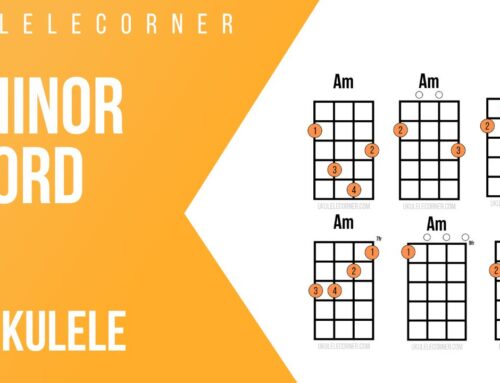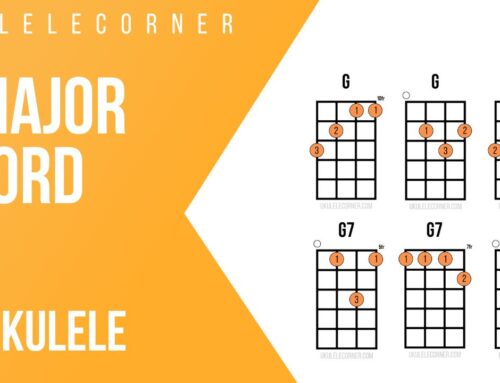In this article we’ll look at how choosing different left-hand fingerings can make some chord transitions easier to play.
Chord Transitions
Have you ever noticed that moving from one chord shape to another can be much easier with different sets of fingers? For example, try playing a common G chord with frets 0, 2, 3, 2, low to high. Now move to a D7 chord 2, 0, 2, 0, low to high. Which fingers are best to use here in the left hand?
We most commonly play the G chord shape with the 1st finger on the 3rd string, 3rd finger on the 2nd string, and 2nd finger on the 1st string. With this fingering, the smoothest transition with the least amount of movement would be: 1st finger on the 4th string and 2nd finger on the 2nd string for the D7 chord. Try this moving back and forth between the two chords and you will see that very little movement is needed.
Another common fingering for this D7 chord shape is to use the 2nd finger on the 4th string and 3rd finger on the 2nd string. You should be able to make this transition smoothly but it requires more movement.
Now try moving from the same D7 shape to the common G7 chord shape 0, 2, 1, 2 from low to high with the 2nd finger on the 3rd string, 1st finger on the 2nd string, and 3rd finger on the 1st string. Now the 2nd and 3rd fingers can easily move to the D7 shape with the least amount of motion instead of the 1st and 2nd fingers.
Using Different Left-Hand Fingerings for the Same Chord
The point here is that you can often use many different fingering combinations for the same chord. You may even decide to use a specific fingering to minimize the amount of motion between chords. There may be times when it will make more sense to use a barre for the G shape. This will be the case if other notes will be added on the 5th fret while holding the shape. Or you may even use the 2nd, 3rd and 4th fingers if the first finger will be used on the 4th string 4th fret while moving the other fingers up 2 frets to an A chord shape.
The basic rules I often follow when deciding on left-hand fingerings is as follows:
- Look for the least amount of motion between fingerings.
- Place fingers down in succession as needed when arpeggiating.
- Avoid using the same finger to play notes on the same fret on different strings.
- Use guide fingers whenever possible (same finger on a string moving to a new position).
- And stretch with the index finger before the 4th finger whenever possible to keep the hand relaxed and the 4th finger curved.
See if you can add left-hand fingerings to a fingerstyle piece you are learning and try to apply these concepts. I add fingerings in the sheet music at Ukulele Corner by adding numbers next to the standard notation 1 = 1st finger, 2 = 2nd finger, 3 = 3rd finger, and 4 = 4th finger.
You may decide to change fingerings many times as you search for the fingering you prefer. Each time you do this you will have to relearn the phrase you are working on so practice each movement repeatedly until it feels comfortable and muscle memory kicks in.
***
We have many more technique lessons just like this at Ukulele Corner Academy. Join Ukulele Corner Academy today!




Leave A Comment